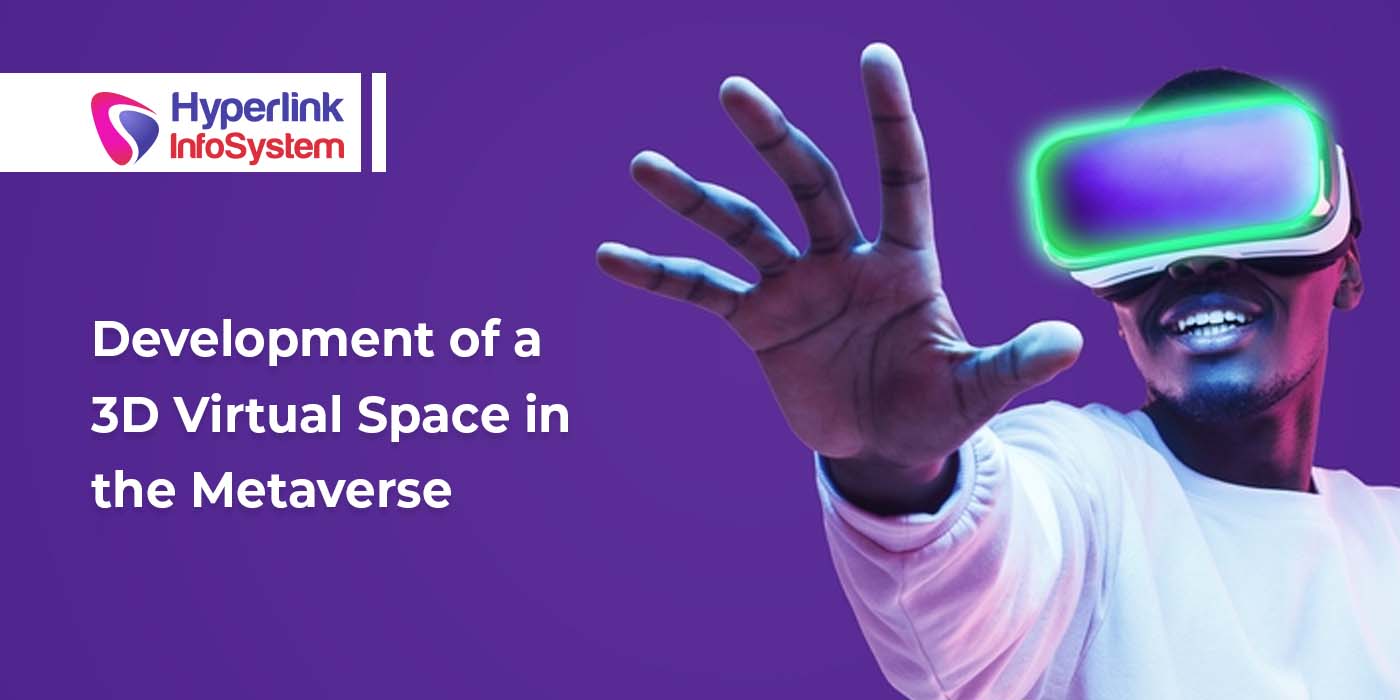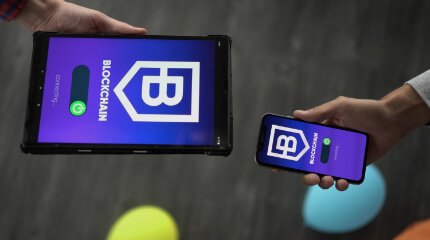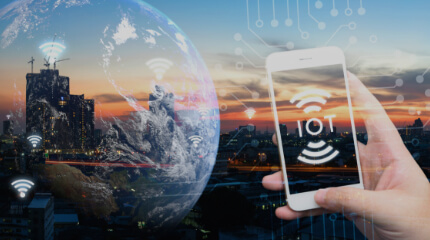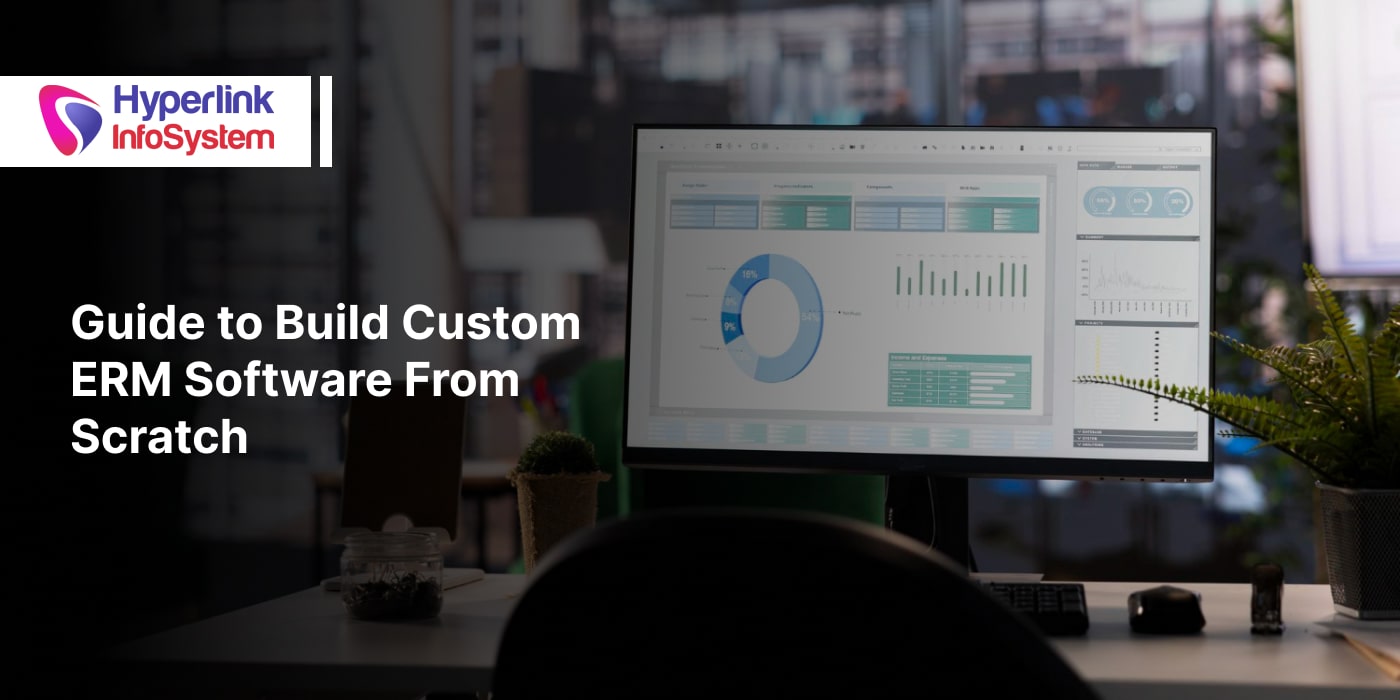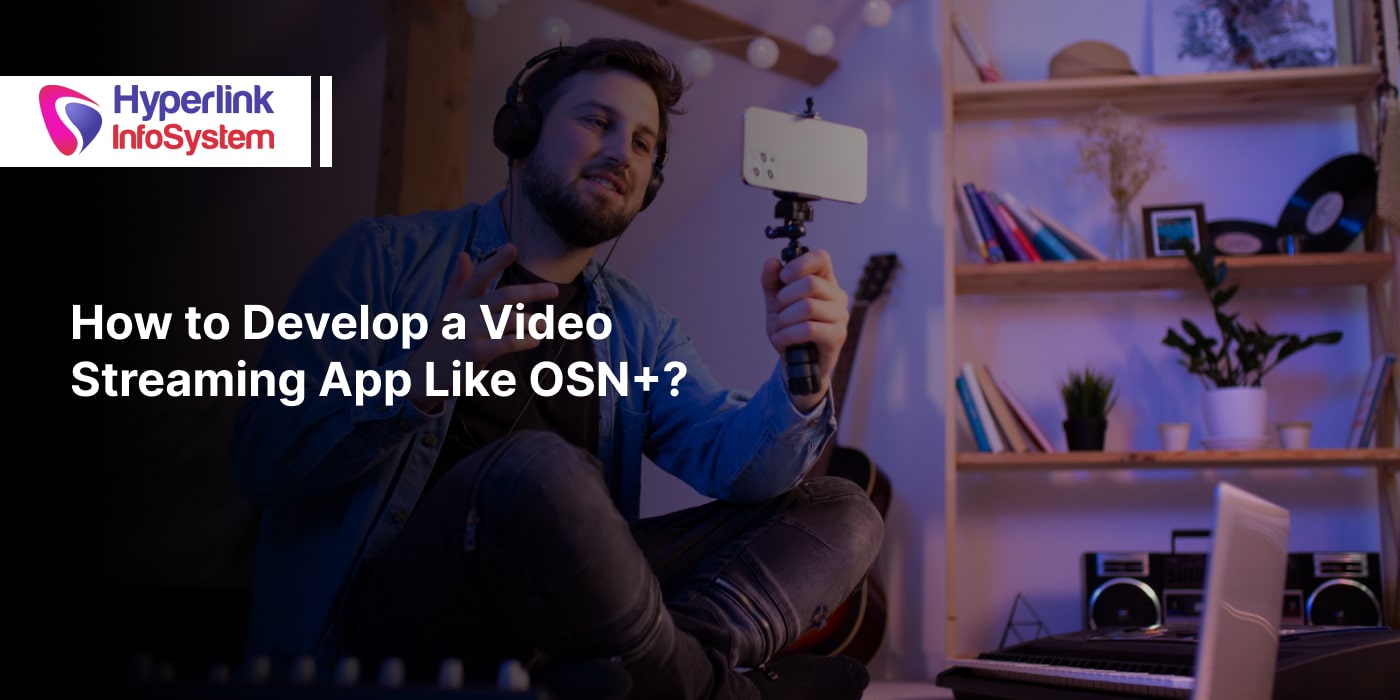The Metaverse is a term used to describe a shared, immersive virtual space that is built and maintained by its users. It is a concept that has been around for many years but has gained renewed interest with the recent rise of virtual reality technology and the increasing importance of digital experiences in our daily lives. As a Metaverse development company, we strive to push the boundaries of what's possible in virtual reality.
Metaverse 3D space development involves the creation of virtual environments that users can explore and interact with. These environments can be designed to mimic real-world locations, or they can be entirely new and fantastical worlds that exist only in the digital realm. They can also be used for a variety of purposes, from entertainment and gaming to education and training.
To create a Metaverse 3D space, Metaverse developers use a variety of tools and technologies, including 3D modeling software, game engines, and virtual reality platforms. They work to create a seamless, immersive experience that allows users to feel as though they are truly present in the virtual world.
One of the key challenges in Metaverse 3D space development is creating a sense of community and social interaction within the virtual world. Metaverse 3D space developers must design features and tools that allow users to connect, form groups, and collaborate on projects. This may involve creating virtual marketplaces, chat rooms, or other social spaces.
The purpose of this article is to examine Metaverse and 3D space, features, benefits, future aspects, as well as the cost of building Metaverse 3D space.
The Metaverse is a term used to describe a virtual space that is imagined as a fully immersive, three-dimensional virtual world that is persistent, connected, interoperable, and populated by a potentially infinite number of users and objects. It is essentially a virtual world that exists entirely online and can be accessed through a variety of devices such as computers, smartphones, and virtual reality headsets.
In the Metaverse, users can interact with one another and with virtual objects in real-time, as if they were physically present in the same location. The idea of the Metaverse has been around for many years and has been popularized in various forms of media, including books, movies, and video games.
The concept of the Metaverse is becoming increasingly relevant as virtual reality and other immersive technologies continue to advance. Companies like Facebook, Google, and others are investing heavily in the development of the Metaverse, as they see it as a potentially lucrative market for social interactions, gaming, entertainment, and commerce.
While the Metaverse is still in its early stages of development, many experts believe that it has the potential to revolutionize the way we interact with one another and with the digital world, and could have profound implications for everything from education and work to social interaction and entertainment.
Metaverse 3D Space is the virtual environment within the Metaverse that is created using 3D modeling and rendering technologies. It is a fully immersive virtual space where users can interact with each other and with virtual objects in a three-dimensional environment.
Metaverse 3D Space is created by Metaverse 3D space developers who use specialized software tools to design and build the virtual environment.
Metaverse development tools allow them to create virtual objects, landscapes, and characters, and to program them with interactive behaviors.
Once created, the Metaverse 3D Space can be accessed by users from anywhere in the world using a variety of devices, including computers, smartphones, and virtual reality headsets. Users can explore the virtual environment, interact with other users and objects, and even create their virtual objects and spaces within the Metaverse.
Metaverse 3D Space has a wide range of potential applications, including gaming, education, training, and social interaction. It allows users to experience virtual environments and scenarios that would be difficult or impossible to replicate in the real world and provides a platform for new forms of social interaction and collaboration.
As technology continues to advance, Metaverse 3D Space is likely to become an increasingly important part of our digital lives, with new applications and use cases emerging all the time.
Developing a Metaverse 3D space has the potential to transform the way we live, work, and interact with each other and technology. Our team of talented Metaverse developers is dedicated to building a metaverse that is both engaging and intuitive to use. There are several compelling reasons why one should invest in the Metaverse development.
A Metaverse development offers a fully immersive virtual world. In a world where physical contact is limited, it provides an alternative way to connect with people and experience a sense of community. This can be particularly beneficial for individuals who are unable to leave their homes due to physical or geographical limitations.
A Metaverse offers endless possibilities for creativity. Users can create and experience digital art, music, and games in a fully immersive environment. This can foster innovation and inspire new forms of digital expression.
Metaverse development can provide a platform for education and training. Students and professionals can engage in simulations and practical applications of their learning. This can be particularly beneficial for fields such as medicine, engineering, and aviation, where practical experience is critical.
Metaverse provides a new avenue for businesses to market and sell products and services, creating new revenue streams. This can be particularly valuable for businesses that operate in the digital space, such as e-commerce and online gaming.
Metaverse development also offers a new dimension to human experience, enabling us to explore and experience things that are impossible or difficult to achieve in the physical world. This can open up new opportunities for research, discovery, and innovation.
The development of a Metaverse 3D space has the potential to revolutionize the way we interact with each other and technology, providing new opportunities for creativity, education, and business.
We will now discuss several features of Metaverse 3D space development.
The development of a Metaverse 3D space involves creating a fully immersive virtual world where users can interact with each other and digital content. Several key features are important to consider when developing a Metaverse 3D space:
3D Environments
A Metaverse 3D space requires the creation of fully immersive 3D environments that can be explored by users. These environments should be visually appealing and provide users with a sense of presence and immersion.
Avatars
Avatars are digital representations of users within the Metaverse. These avatars should be customizable to allow users to express their individuality, and they should be able to interact with other avatars in the virtual world.
Immersive
Metaverse 3D Space Development provides an immersive experience to its users. It allows them to feel as if they are present in a real-world environment, even though it is a virtual one. Users can interact with their surroundings, objects, and other users in real time, creating a sense of presence and immersion that is not possible in traditional 2D interfaces.
Persistent
Metaverse 3D Space Development is a persistent environment, which means that it exists and evolves even when users are not present. This feature allows users to return to the same environment and continue their activities from where they left off, providing continuity and coherence to the virtual space.
Multiple Integrations
Metaverse 3D Space Development integrates with multiple platforms and technologies, allowing users to connect and collaborate seamlessly. It can integrate with social media, e-commerce, gaming, and other applications, enabling a rich and diverse user experience.
Advanced Security
Metaverse 3D Space Development employs advanced security measures to protect user data and prevent unauthorized access. It uses encryption, multi-factor authentication, and other security protocols to ensure that user information and transactions are secure and protected.
Real Experiments
Metaverse 3D Space Development allows users to conduct real experiments in a virtual environment, providing a safe and controlled space for scientific research and development. Researchers can simulate real-world conditions and test their hypotheses without the risks associated with physical experiments.
Metaverse 3D Space Development has several benefits. Take a look at some of the many benefits that come with Metaverse 3D space development.
Enhanced User Experience
Metaverse 3D Space Development provides an immersive experience to users, making them feel as if they are present in a real-world environment. It allows users to interact with each other and with the virtual space, creating a sense of presence and immersion that is not possible in traditional 2D interfaces.
Increased Collaboration
Metaverse 3D Space Development allows users to connect and collaborate seamlessly, regardless of their location. It integrates with multiple platforms and technologies, enabling users to work together and share information in real time, improving productivity and efficiency.
Improved Accessibility
Metaverse 3D Space Development provides an accessible environment for users with disabilities or limited mobility. It allows them to participate in activities and interact with others without the physical barriers they may face in the real world.
Safe and Controlled Environment
Metaverse 3D Space Development provides a safe and controlled environment for users to conduct experiments, simulate real-world scenarios, and test hypotheses. It eliminates the risks associated with physical experiments, enabling researchers to explore new ideas and concepts without the danger of physical harm.
Cost-Effective
Metaverse 3D Space Development is a cost-effective solution for businesses and organizations that need to train employees, conduct research, or host events. It eliminates the need for physical space and reduces travel costs, making it a more economical option for many organizations.
The
cost of building a 3D space in the Metaverse can vary depending on several factors, such as the complexity of the design, the size of the space, and the level of interactivity required. Some of the costs involved in building a 3D space in the Metaverse may include:
Development Costs
The development costs of building a 3D space in the Metaverse can include expenses such as hiring a team of developers, designers, and artists to create the space. The cost of development can vary based on the complexity of the design and the level of interactivity required.
Platform Costs
The platform costs of building a 3D space in the Metaverse can include expenses such as purchasing or renting virtual land, paying fees for hosting and maintaining the space and paying for the use of the platform's tools and features.
Hardware Costs
The hardware costs of building a 3D space in the Metaverse can include expenses such as purchasing or upgrading computer hardware and equipment to support the development and hosting of the space.
Marketing Costs
The marketing costs of building a 3D space in the Metaverse can include expenses such as promoting the space to potential users and customers, creating advertising materials, and attending events to showcase the space.
The total cost of building a 3D space in the Metaverse can range from a few thousand dollars to hundreds of thousands of dollars or more, depending on the complexity of the project and the desired level of interactivity. It is essential to
Hire Metaverse developers and designers and conduct thorough research to determine the estimated cost of building a 3D space in the Metaverse.
The Metaverse is a virtual reality world that allows users to interact with each other and with digital objects in a shared, 3D space. The concept of the Metaverse development has been around for decades, but recent advancements in technology and increased interest from both consumers and businesses have made it a hot topic in the tech world. Here is an explanation of how the Metaverse is expected to impact various industries:
Metaverse Art Gallery
In the Metaverse, art galleries can provide a unique and immersive experience for art enthusiasts. Visitors can interact with the art in a way that is not possible in a traditional gallery, such as by walking around sculptures or zooming in on details in a painting. The Metaverse can also make art more accessible to people who are unable to visit physical galleries due to distance, mobility issues, or other constraints.
Metaverse Expo Hall
The Metaverse provides an opportunity for businesses to showcase their products and services in a virtual environment. An expo hall in the Metaverse can allow companies to reach a global audience and connect with potential customers in a way that is not possible with physical trade shows. The Metaverse also allows for more creativity in booth design and interactive demonstrations.
Gaming Space
The Metaverse has the potential to transform the gaming industry. Games in the Metaverse can be more immersive, social, and interconnected than traditional games. Players can interact with each other in a shared virtual world, creating a more collaborative and dynamic experience. The Metaverse can also allow for new types of games that are not possible in the physical world.
Social Media Platform
The Metaverse can provide a new type of social media experience. Users can interact with each other in a shared virtual space, rather than just through text or images on a screen. The Metaverse can also provide new ways for people to express themselves and connect with others based on shared interests and experiences.
Event Hosting Platform
The Metaverse can provide a new type of event-hosting platform. Events in the Metaverse can allow for more creativity and interactivity than physical events. Attendees can interact with each other and the event space in a more dynamic way, and events can be hosted on a global scale, without the need for attendees to travel.
Metaverse NFT Marketplace
Non-Fungible Tokens (NFTs) are unique digital assets that are stored on a blockchain. In the Metaverse, NFTs can be used to represent virtual assets, such as virtual real estate or digital art. The Metaverse NFT marketplace can allow for the buying and selling of these virtual assets, creating a new type of economy.
Education Industry
Metaverse 3D space has the potential to revolutionize the education industry by providing students with an immersive and interactive learning experience. It can be used to create virtual classrooms, simulations, and experiments, enabling students to learn in a safe and controlled environment.
Real Estate Industry
Metaverse 3D space can be used in the real estate industry to create virtual tours of properties and provide potential buyers with an immersive and realistic viewing experience. It can also be used to create virtual staging, enabling sellers to showcase their properties in various settings and styles.
Healthcare Industry
Metaverse 3D space has the potential to transform the healthcare industry by providing patients with virtual consultations, simulations, and treatments. It can be used to create virtual hospitals and clinics, enabling patients to receive care in a safe and controlled environment.
Entertainment Industry
Metaverse 3D space can be used in the entertainment industry to create immersive and interactive experiences, such as virtual concerts, festivals, and events. It can also be used to create virtual movie theaters and gaming centers, enabling users to enjoy entertainment in a safe and controlled environment.
Conclusion
The development of a 3D virtual space in the Metaverse is an exciting and rapidly evolving area of technology. As virtual reality and augmented reality technologies continue to improve, the Metaverse has the potential to become a fully immersive, shared digital world that enables new types of experiences and interactions.
From art galleries and expo halls to gaming spaces and social media platforms, the Metaverse is expected to impact various industries in significant ways. The use of non-fungible tokens (NFTs) in the Metaverse also creates new opportunities for the buying and selling of virtual assets.
However, Metaverse development is still in its early stages, and some challenges need to be addressed, such as ensuring the safety and security of users and creating a more accessible and inclusive virtual world. It is also important to consider the potential impact on real-world interactions and to ensure that the Metaverse does not replace important physical experiences.
The development of a 3D virtual space in the Metaverse is a fascinating and evolving area of technology that has the potential to transform how we interact with each other and with digital content. As a
Metaverse development company, Hyperlink InfoSystem is at the forefront of creating immersive virtual experiences for users around the world.
